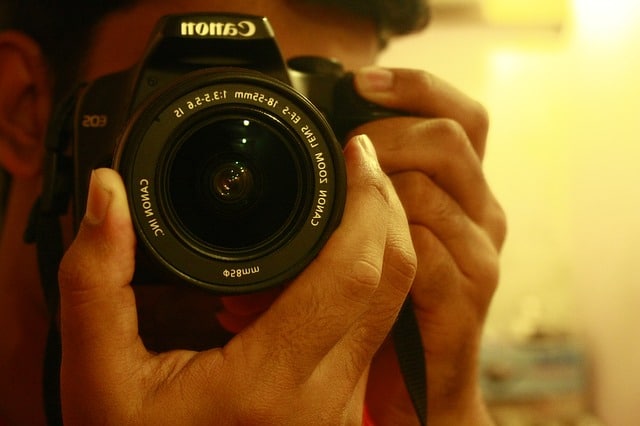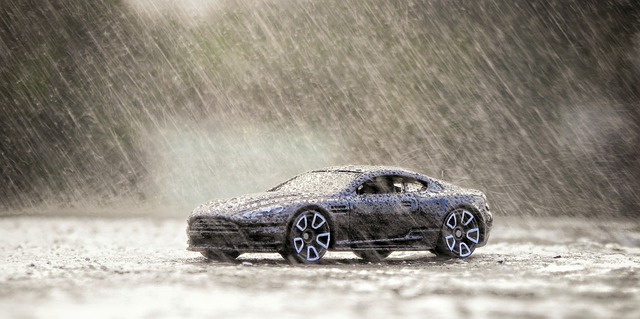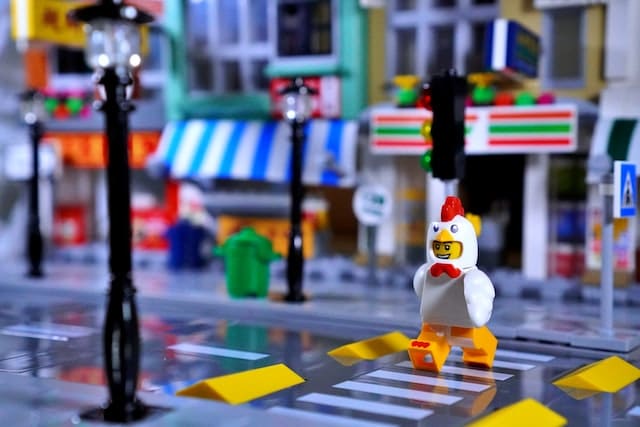Harness the power of natural light in toy photography by shooting during the golden hour for a soft glow or the blue hour for enchanting hues. Try front lighting to highlight colors, backlighting for silhouettes, and side lighting for texture. Use window light indoors to avoid harsh shadows, and soften these with reflective surfaces. Play with direct sunlight for dramatic shadows and sun flares for creative effects. There's so much more to discover about lighting techniques!
Utilizing Golden Hour for Soft Lighting
When you want to capture soft lighting in your toy photography, utilizing the golden hour can make a significant difference. This magical time occurs shortly after sunrise or just before sunset, offering a warm, gentle glow that enhances your toy figures. Position your toys to face the sun, ensuring the light softly wraps around them, highlighting intricate details without harsh shadows.
Experiment with angles to find the perfect illumination. You'll notice the softer tones add depth and mood to your images, creating an enchanting atmosphere. Keep your camera settings ready for these fleeting moments, as the light changes quickly. By embracing the golden hour, you can transform your toy photos into mesmerizing, story-filled scenes, making them truly stand out.
Enhancing Shadows With Direct Sunlight
Although the golden hour offers a soft touch, direct sunlight can be equally effective in toy photography by enhancing shadows. Embrace the sun's intensity to create dramatic, stark contrasts that add depth to your images. Position your toy so the sunlight casts long, defined shadows. This technique works well for action figures or models where you want to emphasize form and movement.
Experiment with angles. Try shooting from various perspectives to see how sunlight transforms the scene. A low angle might elongate the shadows, highlighting the toy's features. Conversely, a higher angle can create intriguing patterns. Don't be afraid to move around and adjust. The key is to capture the play between light and shadow, bringing your toys to life in unexpected ways.
Incorporating Window Light for Indoor Shoots

Natural light streaming through a window offers a versatile and controlled environment for toy photography. It provides soft illumination, enhancing details without harsh shadows. Position your toys near a window to take advantage of this gentle light. You can experiment with different times of day; morning and late afternoon light often create warm, inviting tones. Pay attention to the angle and distance from the window, as these factors affect mood and intensity.
To add depth to your shots, try placing the toys at varying distances from the window. This creates a natural gradient of light and shadow. Avoid direct sunlight streaming through the window, as it can produce unwanted glare or overly bright spots. Instead, use sheer curtains for diffused, even light distribution.
Using Reflected Light to Soften Shadows
To soften shadows in your toy photography, try using reflective surfaces like white cards or aluminum foil. By adjusting the angles of these reflectors, you can control how light bounces onto your subject, creating a softer look. Experiment with different positions to see how it changes the mood and details in your photos.
Utilize Reflective Surfaces
When shooting toy photography, employing reflective surfaces can dramatically enhance your images by softening harsh shadows. Use items like white foam boards, aluminum foil, or even a simple piece of white paper as reflectors. Position them strategically to bounce natural light back onto your subject, filling in shadows and creating a balanced look. You don't need expensive gear to achieve professional-looking results; creativity with everyday objects works wonders.
Experiment with the distance and angle of your reflector to control the light intensity. Rotate or tilt the reflector to find the perfect balance between light and shadow. Remember, the goal is to maintain the playfulness of your toys while ensuring they're well-lit. With a bit of practice, you'll master the art of using reflective surfaces effectively.
Experiment With Angles
Although it might seem trivial, experimenting with angles can dramatically transform your toy photography by harnessing reflected light to soften shadows. Start by repositioning your toys and the reflective surfaces around them. Small adjustments can make a big difference in how light interacts with your scene.
Try shooting from various heights and sides to find the perfect angle where reflected light reduces harsh shadows. Use everyday items like white paper or aluminum foil to bounce light onto your subject, creating a natural, soft look. Don't hesitate to move around the room and test how different light sources—like windows—affect your composition.
Every angle offers a new perspective, so keep experimenting until you discover the setup that brings your toys to life.
Capturing Silhouettes With Backlighting

To capture stunning silhouettes with backlighting, start by positioning your toy against a strong light source, like a window or the setting sun, for a dramatic effect. You'll need to balance the light and shadow to guarantee the toy's outline is sharp and distinct, creating a striking contrast. Enhance the silhouette by adjusting your camera settings, such as exposure and focus, to highlight the toy's unique features without losing detail.
Positioning for Dramatic Effect
Creating dramatic effects in toy photography often hinges on the strategic use of light and shadow. Positioning your toys to capture silhouettes with backlighting can add an awe-inspiring touch. Start by placing your toy in front of a light source, like a window or the setting sun. This creates a strong contrast, highlighting the toy's outline while keeping details in shadow.
Experiment with angles, moving around the toy to find the most striking silhouette. You might notice how different positions change the mood and intensity. Keep the background simple to guarantee your subject stands out. Adjust your camera settings to expose for the highlights, enhancing the silhouette effect. With practice, you'll master positioning and create unforgettable, dramatic shots.
Balancing Light and Shadow
Positioning plays a key role in capturing dramatic toy photography through silhouettes, but understanding how to balance light and shadow takes your work to the next level. To create striking silhouettes, place the toy between your camera and the light source, such as a sunset or a bright window. This backlighting emphasizes the toy's outline, creating a dramatic effect. Adjust your camera settings to expose for the background, allowing the toy to appear as a dark shape against the bright light. Be mindful of shadows; they add depth and intrigue. Experiment with angles to find the perfect interplay of light and shadow. By controlling these elements, you'll achieve compelling images that highlight the toy's form and add a sense of mystery.
Enhancing Toy Silhouettes
When you aim to enhance toy silhouettes using backlighting, focus on perfecting the balance between light and shadow. Position your light source behind the toy, allowing its outline to stand out crisply against the illuminated background. This technique lets you capture dramatic and artistic silhouettes, adding a mysterious touch to your photos.
To master this technique, consider these steps:
- Choose the right time of day: Early morning or late afternoon offers softer, more diffused light.
- Experiment with angles: Move around your subject to find the most engaging silhouette.
- Adjust exposure: Lower exposure to deepen shadows and enhance the silhouette.
- Use a plain background: A simple backdrop guarantees the silhouette remains the focal point.
Employing Diffused Light on Overcast Days
Despite the gloomy appearance of overcast days, these conditions offer a unique advantage for toy photography: naturally diffused light. You won't need extra equipment to soften harsh shadows or reduce glare. The clouds act as a giant softbox, creating even lighting that highlights your toy's details without overwhelming contrast.
Position your scene near a window or outdoors to take full advantage of this soft, even illumination. With diffused light, colors appear more vibrant and lifelike, helping you capture a more authentic representation of your toys. Pay attention to how the light wraps around your subject, enhancing textures and features. Experiment with different angles and heights to see how the diffused light interacts with your setup, creating a soft, balanced composition.
Mastering Light Direction for Dynamic Effects
To create dynamic effects in toy photography, understanding light direction is essential. By mastering how light interacts with your toys, you'll add drama and intrigue to your shots. Here's how you can harness light direction effectively:
- Front Lighting: Place the light source directly in front of the toy. This reduces shadows, highlighting vibrant colors and details.
- Back Lighting: Position the light behind the toy. It creates silhouettes or halo effects, perfect for dramatic scenes.
- Side Lighting: Light from the side enhances textures and adds depth, emphasizing the toy's shape.
- Top Lighting: Simulate sunlight by lighting from above, casting downward shadows for a natural look.
Experiment with these techniques to see how different angles transform your photos. Each direction offers unique storytelling opportunities.
Creating Depth With Natural Light Patterns
Understanding light direction lays the groundwork for capturing compelling toy photos, and now it's time to explore how natural light patterns can deepen your images. Use shadows creatively to add layers and intrigue. When sunlight filters through leaves or curtains, it casts unique patterns that can enhance your scene. Position your toys so that these patterns interact with them, creating a sense of depth and dimension. Experiment with morning or late afternoon light, when shadows are longer and more dramatic. Get close to capture details and use the interplay of light and shadow to emphasize textures on your toys. By thoughtfully incorporating natural light patterns, you'll create visually stunning images that draw viewers in and make your toy photography truly stand out.
Leveraging the Blue Hour for Unique Moods
As the sun dips below the horizon, the blue hour emerges, offering toy photographers a magical opportunity to infuse their images with unique moods. This brief period casts a cool, soft light that enhances textures and colors, creating an enchanting atmosphere. Here's how you can make the most of this special time:
- Choose the right toys: Opt for figures with vivid colors that contrast well with the blue hour's tones.
- Adjust your camera settings: Use a slower shutter speed and higher ISO to capture the soft lighting without losing detail.
- Compose with intention: Frame your toys against interesting backgrounds to emphasize the ambient hues.
- Experiment with angles: Capture different perspectives to maximize the dramatic effect of the blue hour light.
Embrace this twilight magic!
Experimenting With Sun Flares for Creative Shots
While the blue hour offers a serene setting, experimenting with sun flares can add a dynamic twist to your toy photography. To capture these striking effects, position your toy so the sun peeks from behind, creating a burst of light. Use a smaller aperture, like f/16, to produce sharper flares. Don't hesitate to reposition yourself; even slight angles can dramatically change the result.
Consider the time of day. Early mornings and late afternoons, when the sun is lower, often yield the most dramatic flares. Keep an eye on your exposure; sun flares can easily overexpose your shot. Experiment with different toys and backgrounds to see how they interact with the light. With patience and practice, you'll create enchanting, ethereal images.
Frequently Asked Questions
How Can I Prevent Glare in Toy Photography Using Natural Light?
To prevent glare in your toy photography, position yourself so the light source is indirect. Use diffusers like sheer curtains or white panels to soften harsh sunlight. Experiment with angles and shadows, adjusting until glare is minimized.
What Camera Settings Work Best With Natural Light for Toy Photography?
You'll want to adjust the ISO to a lower setting, like 100 or 200. Use a wider aperture for depth of field, and set the shutter speed to balance exposure. Experiment with white balance for natural tones.
How Do Seasonal Changes Affect Natural Lighting for Toy Photography?
You'd think seasonal changes wouldn't mess with your toy photography, but they do. Winter's low light and summer's harsh sun demand adjustments. Embrace spring and autumn's soft glow, though—it's nature's ironic way of helping your creativity.
Are There Specific Locations Ideal for Natural Light Toy Photography?
You'll find that open spaces with minimal obstructions are perfect for capturing natural light. Parks, beaches, or patios work well. Avoid direct sunlight by using shaded areas for softer lighting, enhancing your toy photography beautifully.
How Can I Use Natural Light to Highlight Toy Details?
Position your toy so sunlight hits it at an angle, creating shadows that emphasize details. Experiment with different times of day for varied effects. Use reflectors to bounce light, enhancing textures and highlighting intricate features without harshness.
At a Glance
You've got a treasure trove of techniques to elevate your toy photography. Coincidentally, just as the sun finds its way through the clouds, your creativity will shine as you play with golden hour glows, playful shadows, and soft window light. By capturing silhouettes and embracing sun flares, you'll discover new layers and moods. Let each natural light encounter be a delightful coincidence that transforms your shots into enchanting stories.





